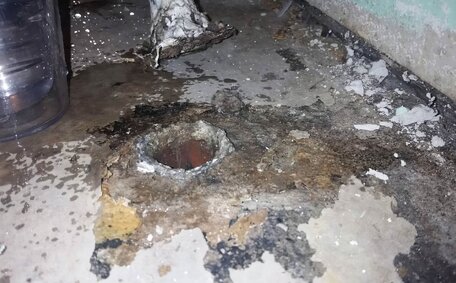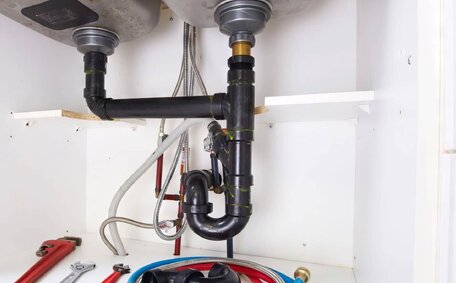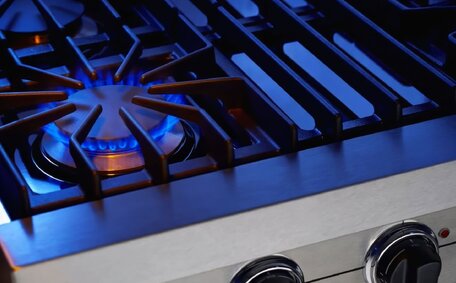Essential Power Tools for Gas Fitting
Gas fitters rely on various power tools to complete installations efficiently and safely. Essential power tools in gas fitting include:
Air Power Operators
Air power operators, which utilise compressed air to drive tools for threading, reaming, and drilling materials such as steel pipes, allow for faster task completion. For instance, models such as the REMS Amigo 2 boast compact, portable designs.
Drills
Cordless drills with torque control allow precise drilling into surfaces like concrete or brick when installing gas pipes. Rotary hammers drill through masonry. The variable speed settings of these tools allow for the application of the correct force to the task.
Small Drilling & Stopping Machine
Tapping or drilling holes into gas pipes without interrupting the gas flow is a critical technique in gas fitting. These machines facilitate in-line work without interrupting service, using self-sealing mechanisms to prevent leaks.
Control Valves & Test Equipment
Devices like pressure gauges, manometers and electronic gas detectors measure leak levels and ensure safety. Valves regulate gas flow during installations. Access to certified, well-maintained equipment is critical for both safety and efficiency.
While advanced power tools increase productivity, gas fitters must follow a safe work method and maintain equipment properly to ensure compliance with standards.
Hand Tools Required for Gas Installations
Gas fitters rely on an array of essential hand tools for completing installations safely and efficiently. Having the right hand tools, including wrenches and measurement devices, is essential.
Pipe Wrenches
Pipe wrenches, such as Stillsons or Monkeys, are designed to grip and turn pipes securely. Their adjustable jaws lock into position, providing leverage when screwing pipe together or disconnecting joints.
Tubing Cutters
Tubing cutters precisely score and cut copper, steel, or plastic tubing to prepare clean ends for fitting connections.
Hacksaws & Files
Hacksaws cut materials like steel pipes to measured lengths. Files then smooth cut edges. Used together, hacksaws and files ensure pipes are correctly prepared for assembly.
Torque Wrenches
Torque wrenches apply specific amounts of turning force when tightening fittings and appliances. This prevents overtightening or leak-causing loose fits.
Pipe Threaders
Pipe threaders cut threads into pipes for attaching fittings securely. Right-hand dies cut external threads, while right-hand taps create internal ones for secure connections.
Flaring & Bending Tools
Flaring tools expertly shape the ends of copper tubing to connect with fittings seamlessly. Bending springs allow accurately angling tubes.
Leak Detectors
Electronic gas detectors identify leaks by sensing methane. Other models use odorant-detecting fluid. Regular leak checks are vital to maintain the integrity of your gas system.
Extensive training enables gas fitters to skilfully use these manual tools for high-quality installations.
Safety Gear and Protective Equipment
When working with hazardous gases, using proper safety gear is crucial for gas fitters. Standards like AS/NZS 1596 require protective equipment to minimise risks.
Flame-Retardant Clothing
Non-flammable clothing, such as pants, shirts, and overalls, protects against burns from sparks and flames. Treated cotton or fibre blends prevent ignition while allowing movement.
Steel-Toe Boots
Steel-toe boots provide crucial protection for the feet against falling objects and tools. Their slip-resistant soles offer stability on surfaces made slippery by water or chemicals.
Safety Glasses & Hard Hat
Safety glasses with impact-resistant side shields and hard hats provide essential protection for the eyes and head.
Leather Gloves
Leather gloves protect hands against rough edges and heat during pipe handling and soldering. It’s important to select gloves that protect without compromising hand dexterity.
Hearing Protection
Using earplugs or earmuffs safeguards hearing from loud equipment like pipe threaders. Noise-induced hearing loss is preventable.
Respirators & Gas Monitors
Respirators, fitted with appropriate cartridges, filter out hazardous fumes, essential when soldering or using solvents. Portable gas detectors also alert to dangerous vapours.
Since a significant portion of injuries affects hands and fingers, the right protective gear is vital for risk mitigation in gas fitting.
Compliance with Gas Fitting Standards
Adhering to plumbing gas fitting standards is crucial for ensuring safe, legal installations. In Australia, key regulations include AS/NZS 1425 for LPG and AS/NZS 2739 for CNG.
These standards are the foundation of a management system, detailing requirements such as:
- Using approved materials and jointing methods
- Testing pipes and appliances for leaks
- Following purging, ventilation, and pressurising procedures
- Providing visible signage and clear consumer information
- Maintaining compliance documentation
Furthermore, these regulations require meticulous servicing, maintenance, and the provision of spare parts and guidelines for comprehensive lifecycle management. For instance, tubing must be annealed or strain-free bent with specific minimum bend radii.
The 2018 edition of the Gas Safety (Gas Installation) Regulations references updated amendments to the standards. Gas fitters must adhere to these to undertake certified work legally.
Adherence to standards mitigates the risks of fire, explosions, poisoning, and environmental damage. It also instils quality assurance and consumer protection. With public safety paramount, the consequences for non-compliance include penalties, liability claims and licence revocation.
Rigorous training ensures that certified fitters are well-versed in standards and their latest amendments. Gas fitters show their dedication to duty of care by prioritising standards and following a method statement in their work.
Compliance becomes integrated into their tool use, work practices, and record-keeping, ensuring it is a fundamental aspect of their operations.
Maintenance of Gas Fitting Equipment
Properly maintaining gas fitting equipment is essential for safety and performance, reflecting a robust work method. As specialist tools see heavy use on jobsites, regular servicing and checks helps prevent issues.
Hand Tools
It is critical to conduct regular inspections of hand tools, including pipe wrenches, tubing cutters, and torque screwdrivers, for any signs of damage. Replace worn parts like loose jaws or blunt cutting wheels. Clean and lubricate items after use to prevent corrosion.
Power Tools
Adhere to manufacturer guidelines for replacing brushes, gears, and seals.
Regular inspection of tool housings for cracks ensures ongoing functionality and safety.
Hoses & Gauges
Regular visual inspections of gas hoses and fittings help identify leaks, cracks, or wear.
Conduct annual pressure tests on certified gas welding hoses to verify their reliability and safety. Calibrate digital manometers every 6 months. Proactively swap outdated parts.
Safety Gear
Check protective gear like glasses and gloves for tears. Test gas detectors monthly or per maker’s advice.
Replace respirator filters regularly. Ensure batteries don’t run low.
Documentation & Compliance
Ensure maintenance logs are updated to reflect the service status and certification of equipment. Items approaching the end of their lifespan should be updated or replaced as necessary. Reference checklists to meet industry body and manufacturer standards.
Properly maintained tools not only perform better but also prevent workplace incidents. Through diligent maintenance practices, gas fitters ensure continued safety and compliance.






